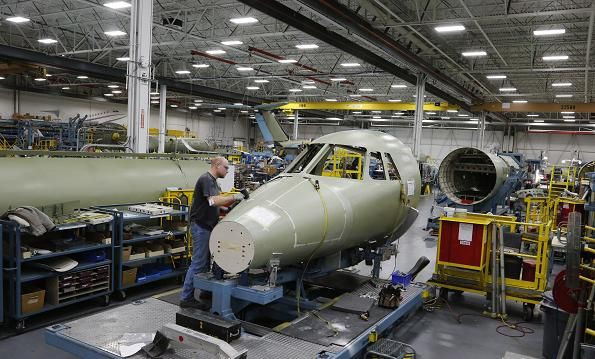State Of The Union 2014: Obama Pushes For More High-Tech Manufacturing Hubs

One detail you might have missed in the State of the Union address last night was President Barack Obama’s mention of high-tech manufacturing hubs.
By combining public-private partnerships with the leading edge of technology, politicians hope to plant the seeds of new middle-class jobs. But can the business of 3-D printers and semiconductors really replace lost jobs at paper mills and auto factories?
The U.S. has “the chance, right now, to beat other countries in the race for the next wave of high-tech manufacturing jobs,” the president said Tuesday night.
These programs are still in the very early stages. The first high-tech manufacturing hub, focused on 3-D printing, launched in August 2012 in Youngstown, Ohio, with the help of $30 million in federal funds and $40 million from companies and universities. Initially dubbed the National Additive Manufacturing Innovation Institute, it’s since rebranded as the slightly easier-to-remember America Makes. In its first year, America Makes has partnered with 79 groups and funded seven research projects that are aiming to improve 3-D printing methods and apply the technology in new areas, like metal printing.
A couple weeks before the State of the Union address, Obama announced the launch of a second hub in Raleigh, N.C. The Raleigh hub will be getting $70 million in funds from the Department of Energy over five years, and businesses, universities and the state will kick in at least another $70 million.
On Tuesday, Obama said he’d be launching six more high-tech manufacturing hubs this year and called on Congress to pass bills that would fund even more centers.
This year’s high-tech manufacturing pitch is actually a scaled-down version of Obama’s goal from last year. In his 2013 State of the Union address, Obama said he’d be launching three more hubs that year, and called on Congress to expand the network to 15 hubs total.
The network would “guarantee that the next revolution in manufacturing is made right here in America,” Obama said in 2013. “We can get that done.”
Republican politicians haven’t been as enthusiastic about the potential for job creation. In place of Obama’s current plans, "he could call for true, bipartisan tax reform," Senate Minority Leader Mitch McConnell (R-Ky.) said earlier this month, after the Raleigh announcement, according to the Los Angeles Times. "He could announce construction of the Keystone pipeline, which would help create thousands of American jobs right away. And he could actually deliver on one of the brightest spots of his economic agenda: trade."
Obama hasn’t yet offered specifics about where future high-tech hubs would be located. But the president positioned the plan as a key to future economic growth, and exhorted legislators to support basic research as a compliment to manufacturing.
“China and Europe aren't standing on the sidelines, and neither should we,” Obama said. “We know that the nation that goes all-in on innovation today will own the global economy tomorrow. This is an edge America cannot surrender. Federally funded research helped lead to the ideas and inventions behind Google and smartphones. And that's why Congress should undo the damage done by last year's cuts to basic research so we can unleash the next great American discovery.”
--
(Note: High-tech vehicle manufacturing plant by Shutterstock.com.)
© Copyright IBTimes 2025. All rights reserved.





















